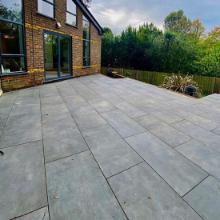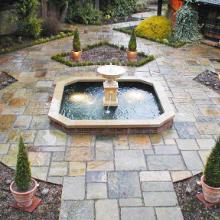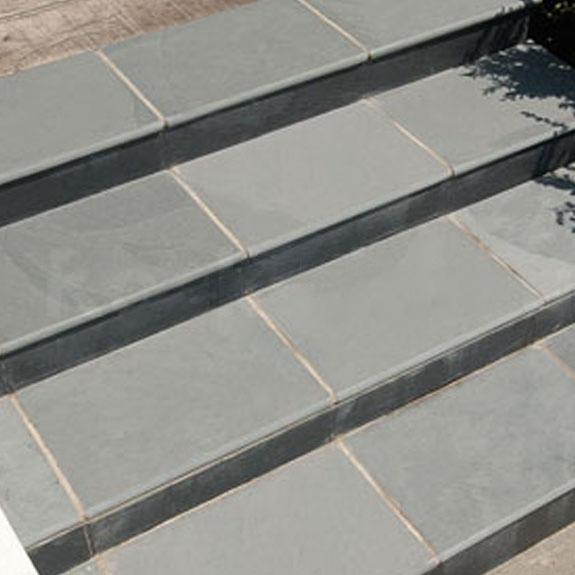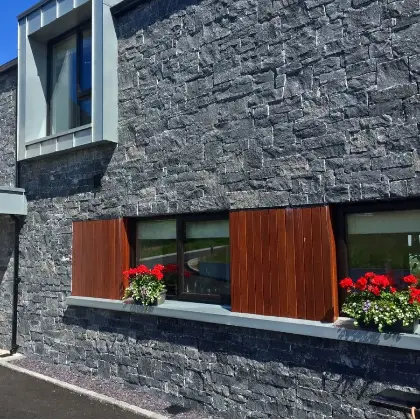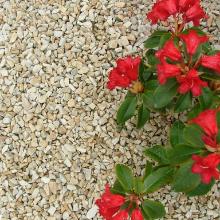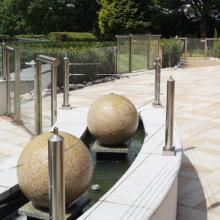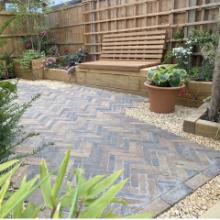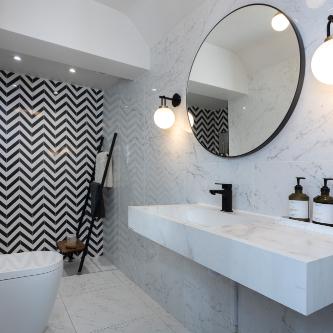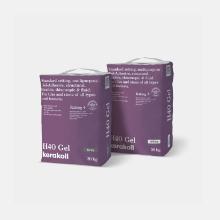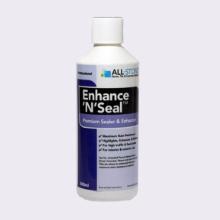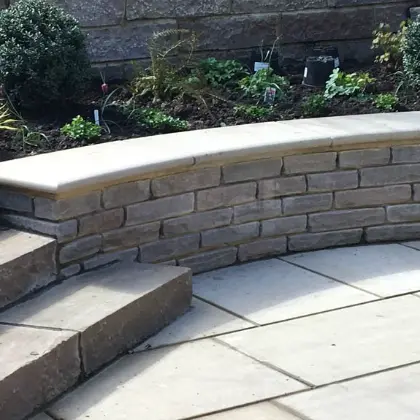Rust Marks on Newly Laid Stone |
Many, probably all, Indian sandstones, some limestones, and other sand stones from elsewhere in the world (including Yorkstones) contain minerals that can become mobile when the stone is laid. This is due to water movement through the stone which picks up the mineral and, when the water evaporates at the surface, the mineral can appear as a stain on the surface. Alkalis in bedding mortar, which can be present for several months as the cement in the mixture fully cures, are present in such water and can, depending on the mineral involved, result in higher rates of staining when the stone is first laid. The normal pattern, if any staining at all is to appear, is that stains will appear soon after laying and will slowly fade away over a period of weeks to months of their own accord as rainwater carries the minerals away.
The staining that results from this mineral transport is usually not noticeable at all in most stones as the marks blend in with their permanent colouration and natural patterns. The appearance is typically a small bloom as if a wet teabag was left on the surface of the stone, this then spreads and fades –sometime in patches that highlight any voids present under the stone where there is incomplete contact between the mortar and the back surface of the stone. Sometimes small lines, as if rusty threads had been left on the surface appear before they too fade. The less patterned and lighter the stone means that the marks will be easier to see (such as with grey, beige Indian sandstones).
This, coupled with the fact that it occurs when the stone is freshly laid will also mean that this is also a time when it is most likely to be noticed. Because natural stone varies, even from the same quarry, we cannot and do not guarantee whether any delivery of stone will develop these temporary marks to any degree or indeed at all (the normal case). All that we can say is that this is a well-known and widespread property of most stones used in paving and is a normal part of the early part of the life cycle of these natural products when used for paving. In the case that marks need to be removed more rapidly it is recommended that the entire area is treated rather than spots so as to ensure that the overall appearance of the stone remains as uniform as possible. Products that contain buffered H3PO4 (Phosphoric Acid) are generally effective but should always be tested in an inconspicuous area first. Rock Unique keeps several products of this type in stock. Our recommendation is to let the stone ‘mature’ naturally and simply let the stone go through its cycle. Typically, most of the staining will be gone by the time the cement in the mortar has fully cured, which can exceed two months. If particularly strong/thick mortar mixes have been used it can be longer.
Also, if strong acids (such as HCL) have been used, perhaps for cleaning up cement residues, then staining can be accelerated resulting in larger brown patches across one or more slabs. In any case most staining will in general disappear over time as well but there is a chance, depending on the exact mineralisation, that undesirable chemical reactions will take place if some chemicals are used that result in a less soluble precipitate that may take longer to wash away. Never use HCL on Limestone or Basalt and test it on an inconspicuous area when you do use it. Leave it overnight to be sure that there is no adverse reaction. Do this with any chemical –its just good practice.
Our own experience with our own displays is as follows. Our grey sawn and sandblasted sandstone developed a small number of small brown marks that appeared and disappeared over a period
of a few months. Our riven grey sandstone display was washed down in error with HCL to remove cement residues and several slabs turned quite brown over the following week. They slowly
became greyer week by week until they settled down to their original grey and they remain so. We have noticed (it’s difficult to see) various rusty marks in Mint sandstone, Beige sandstone, Raj
Sandstone, Yorkstone, Irish Sandstone, Quartzite and others. In every case the marks have appeared and then slowly dissolved away over weeks to months.
Again, our advice is that it is best to simply let rusty marks appear and go away of their own accord –it’s a normal part of the life cycle of a natural stone product
